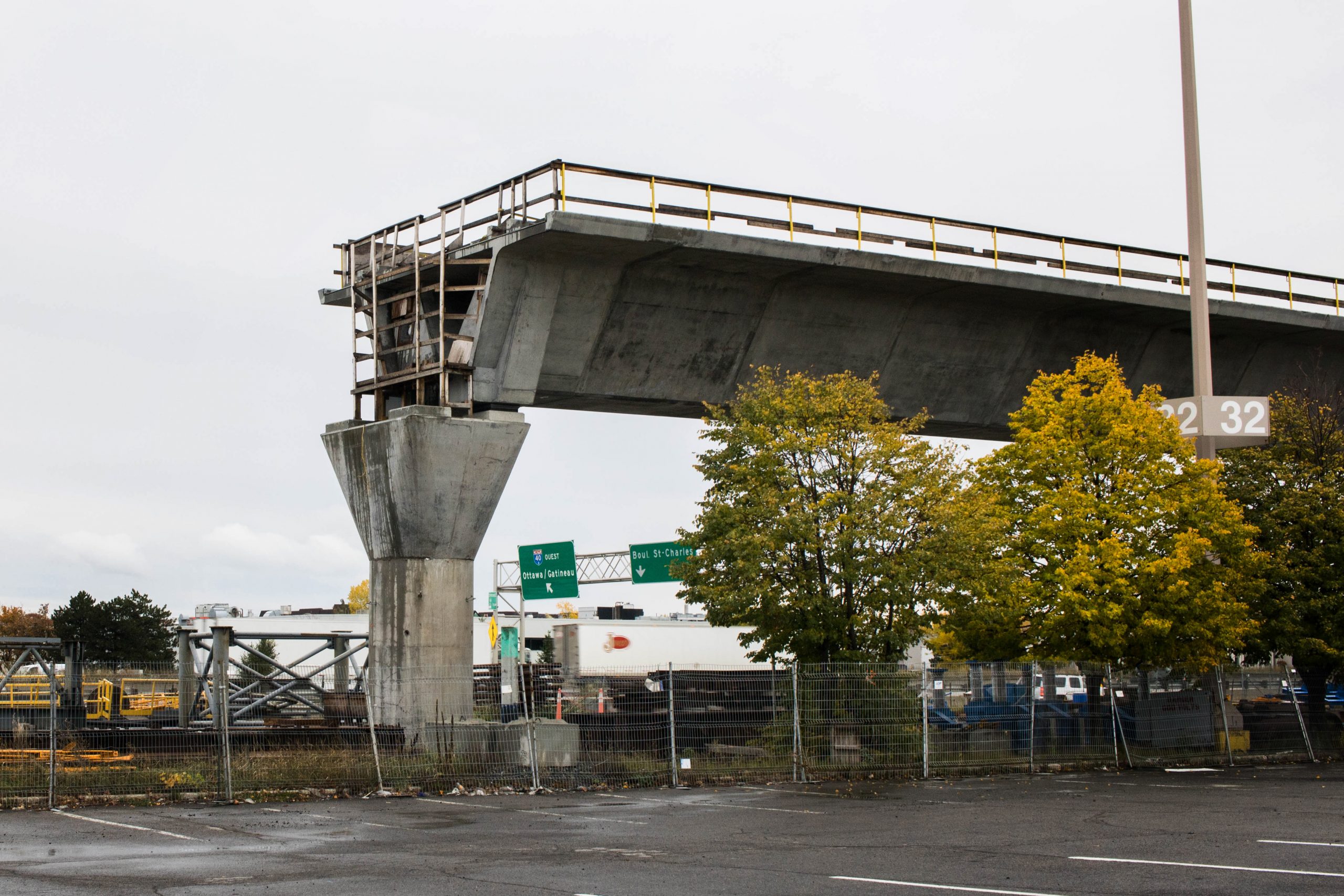The Réseau express métropolitain (REM) light rail will service the West Island in 2023
Montreal’s $6.5 billion public transit project, the Réseau express métropolitain (REM), is set to change the way Montrealers commute to work. But even as the light rail’s construction makes significant progress, West Island residents are concerned about accessibility.
This project broke ground in April 2018 and is expected to begin operation in 2021, extending to Brossard on the South Shore. This driverless light-rail system will consist of 26 stations in the Greater Montreal area, spanning 67 kilometres and directly connecting to the city’s metro system.
In 2023, the REM will start operating on the West Island, whose residents are unsatisfied with the current state of public transportation.
Mayor of Pointe-Claire John Belvedere told The Concordian that “Current service is unreliable, since there’s not enough buses on weekends and at nighttime. The STM is overlooking an entire transportation system here in Pointe-Claire.”
With trains running 20 hours a day, Pointe-Claire residents will be able to reach downtown Montreal in just over 20 minutes. This means commute times for the West Island will be cut at least by half.
However, the entire journey may not be particularly convenient. Belvedere says his municipality is concerned about the accessibility of its future stations: Fairview-Pointe-Claire and Des Sources.
“The roads leading to our REM stations — Saint Jean Boulevard and Sources Boulevard — [are] not pedestrian-friendly, and it’s inconvenient for cyclists to use them,” said the Mayor.
On top of that, residents are worried about the lack of parking spaces at the stations. Nearly 6,000 parking spots have been removed from the initial REM plans, affecting the West Island in particular.
Driving to Kirkland and Pointe-Claire stations could be especially problematic, as the two stations currently have zero planned parking spaces dedicated specifically to future REM commuters. In 2016, however, the two stations were promised to have a 2,000-car capacity combined.
Belvedere said his residents had many more complaints regarding parking than the construction process itself. This weekend, the installation of overground tracks will lead to the closure of Highway 40 westbound near Pointe-Claire. This inconvenience does not seem to significantly disturb the locals, however.
Instead, some have raised concerns over the cost of the entire light-rail project. In fact, Parti Québécois spokesperson Alain Therrien called the REM “a waste of taxpayer money.”
Taxpayers will not be covering the entirety of the project’s $6.5 billion cost. The Caisse de dépôt placement du Québec, Canada’s second-largest pension fund, is contributing $3.2 billion for the light rail’s construction.
The federal and Quebec governments will also be investing $1.283 billion each, thus evenly dividing the funding responsibility.
According to Belvedere, the REM’s potential benefits are worth such a significant financial commitment. He explained that the light rail project would increase the home values in the West Island area and attract more business.
“If you’re a business in Pointe-Claire, you can even have employees living downtown and easily commuting to the West Island. It won’t be a one-way commute anymore, where our residents mostly commute downtown for work.”
The REM is indeed expected to create more jobs for Montrealers, having promised 34,000 employees involved in the construction process as well as 1,000 permanent positions in maintaining the light rail.
West Islanders will have to wait until 2023 for the project to become a reality. The good news is that despite COVID-19, elevated tracks are being actively built along Highway 40, and the project as a whole is progressing according to schedule.
“The REM will be a fabulous system, and it’s something that our people have wanted for years. Now it seems like we’re finally getting it,” said Belvedere.
Photo by Christine Beaudoin
